ZapSnaps! Upgrading a Naim Snaps Power Supply with a Ryan Sound Labs PSM-2
Get ready for more posts like this! I’ve spent the summer converting my garage into a workshop + rehearsal space + listening room — a space that my partner and I are now calling, for reasons known only to ourselves, “Sillys Place.”
I have been building a loudspeaker setup out there (or here, rather, as I am writing this post from Sillys Place) at such a rapid pace that I haven’t really had time to gather my thoughts. (Instead, I’ve been posting little bits in the now 100+ page “Garage System” thread on AudioFlat.)
But now the system is just about done, and it’s quite amazing. So it’s time to gather thoughts — which I’ll do on the newly created Sillys Place page.
ZapSnaps!
First up in this series is what I’m calling the “ZapSnaps” — the power supply I built for my Naim Nac 32.5 preamp (I’ll write more about the 32.5 later).
As far as I know, I’m the only person in the world with a ZapSnaps. And it’s pretty great. Indeed — with some qualification — it’s the component that has made the single biggest difference in the Sillys Place system.
So what is a ZapSnaps? Well, it’s a Naim Snaps power supply modified with a Ryan Sound Lab PSM-2 power supply module. After this surgery, what you’re left with something very like the RSL ZapCap. Thus the name!
I learned about the Ryan Sound Lab power supplies from, of course, an Audio Flat thread (this one). In this thread, YNWaN and Nobeone discuss their experiences with the ZapCap, which RSL founder Kit Ryan regards as an improvement over the venerable and highly regarded Naim HiCap power supply. YNWaN and Nobeone are both HiCap users (both with upgraded Avondale TPR4 upgraded regulators), and were both impressed with the ZapCap, reporting noticeable differences in tone. RSL claim improvements especially in the the tightness of the bass compared to the HiCap, and Nobeone in particular agreed with this, noting a reducing in “bass bloom.” YNWaN was a little less sure there was a clear winner between the two, contrasting the ZapCap’s “clean, clear and dynamic” presentation versus the Hi-Cap’s “big, lush and atmospheric” sound. Neither Nobeone nor YNWaN ended up buying a ZapCap, but both invested in a PSM-1 HiCap upgrade module — which brings the HiCap sound about half way to that of the ZapCap.
So what is the actual difference between a HiCap with a PSM-1 and a ZapCap? Well, there’s rather large one: the huge transformer in a HiCap. A HiCap has a 500 VA transformer, and the ZapCap’s is a mere 120VA (it’s this exact one, by the way). Compare the two photos below.
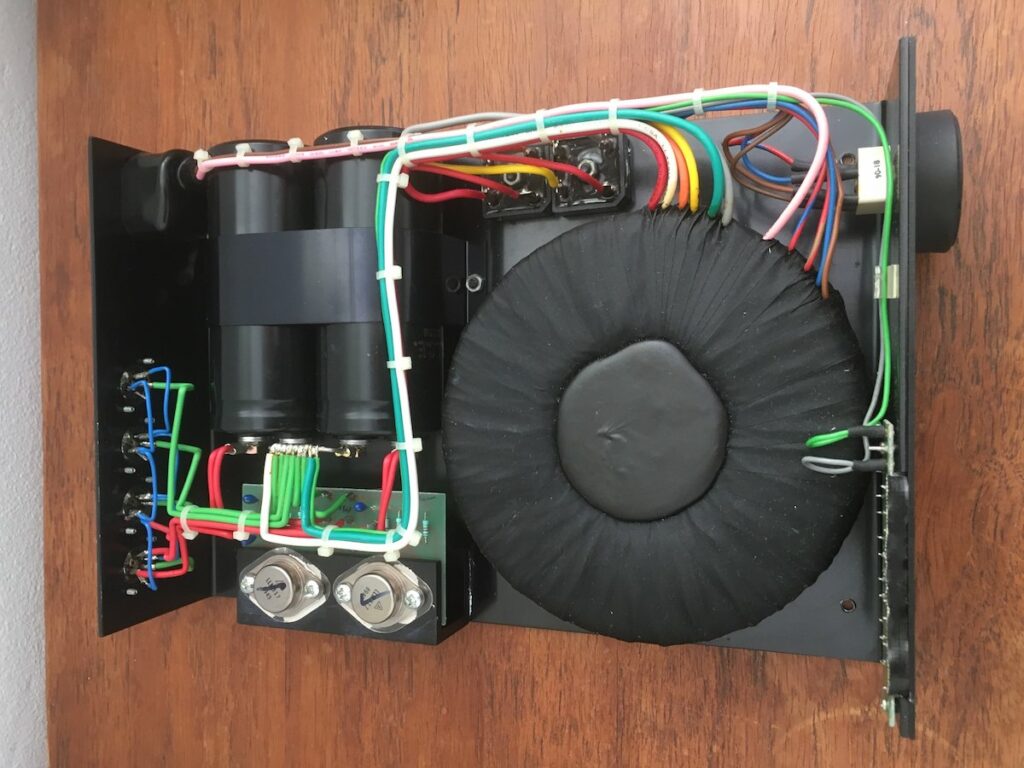
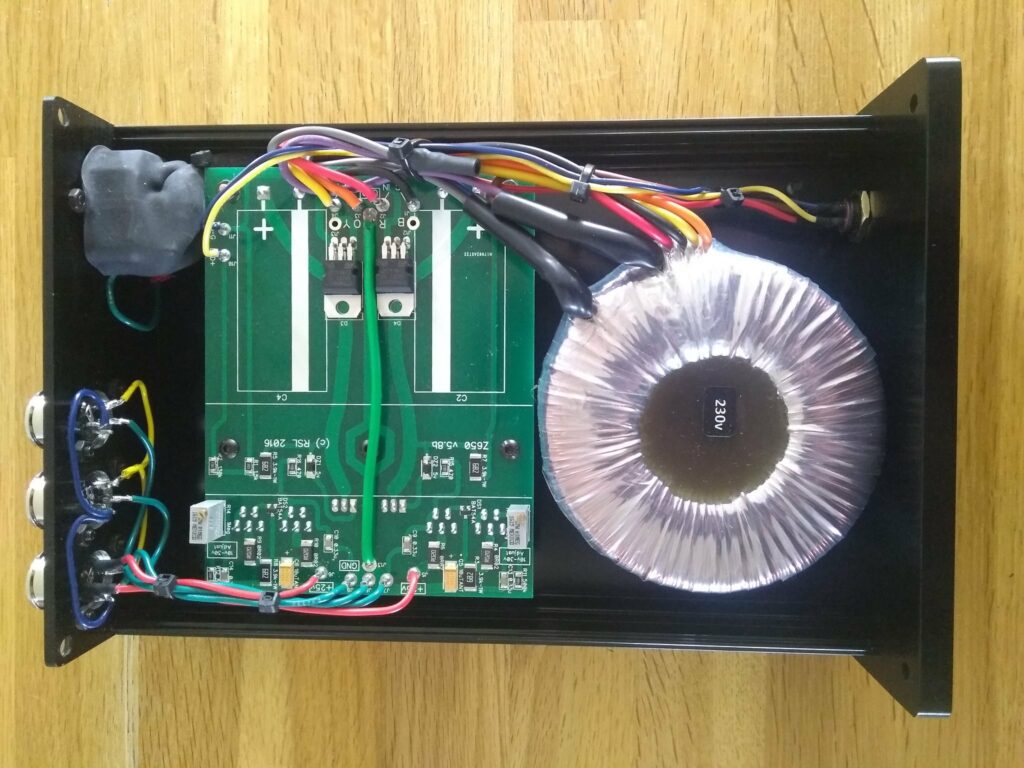
Now, Kit Ryan claims that the smaller transformer of the ZapCap is actually an improvement over the HiCap’s massive 500VA transformer, offering a big contribution to the ZapCap’s clean, fast, dynamic sound. The bigger transformer in the HiCap, Kit Ryan claims, actually muddies the tone. I’ve never used a HiCap, and I don’t know enough technically to evaluate any of these claims — but I did note that Nobeone seemed to agree with Kit’s assessment.
So why did Nobeone decide to stick with his HiCap rather than switch over to a ZapCap? Well, because he already had the HiCap, and modding it with a PSM-1 was cheaper than buying a ZapCap — and also because he preferred the look of the HiCap, and his wife thought its green LED panel looked better in their all-Olive system than the ZapCap with its clashing blue LED. You can see the two below, in his photograph, one atop the other:
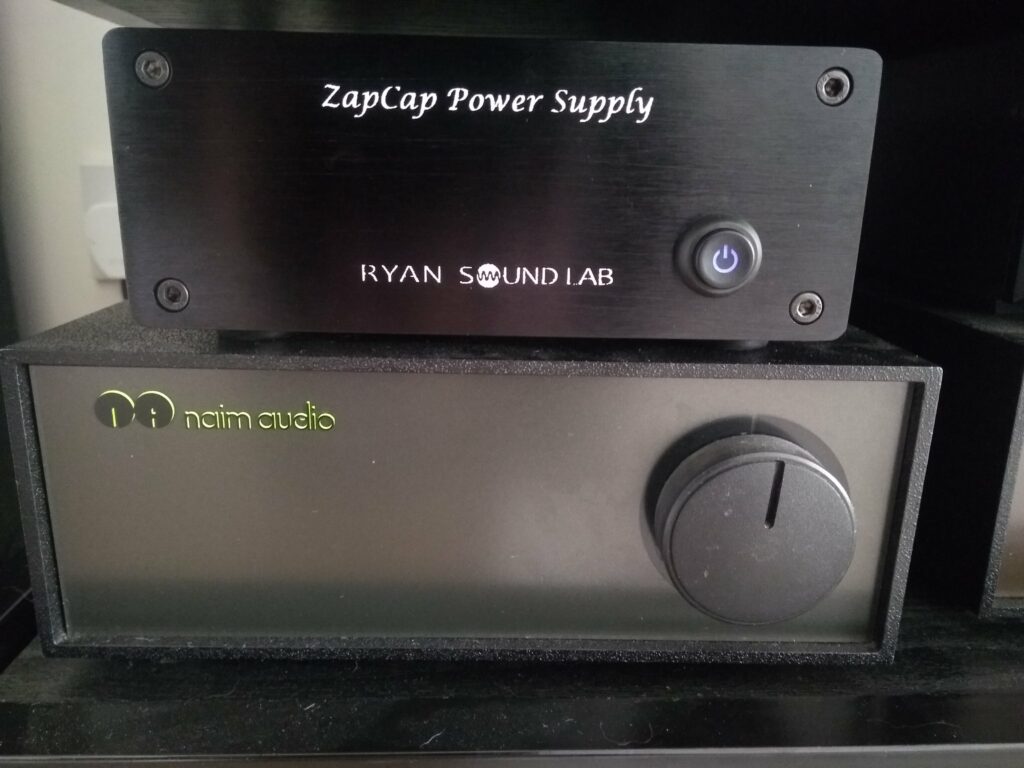
Nobeone’s decision was a perfectly reasonable one, in my opinion. Personally, even if the ZapCap sounded a bit better than a HiCap+PSM-1, I’d pick the latter, because I prefer the look.
But this all got me thinking. Might you not be able to have your cake and eat it too — all the performance of a ZapCap, all the beauty of a Naim box — if you were to modify a Snaps rather than a HiCap?
The idea of a Snaps + PSM-2
The Snaps was the predecessor to the HiCap. It’s very similar, but in a smaller, cuter box — and with a much smaller transformer (I believe it’s about 100VA, so same as the ZapCap’s). This is what an original Snaps — available only during the Chrome Bumper era — looks like on the inside:
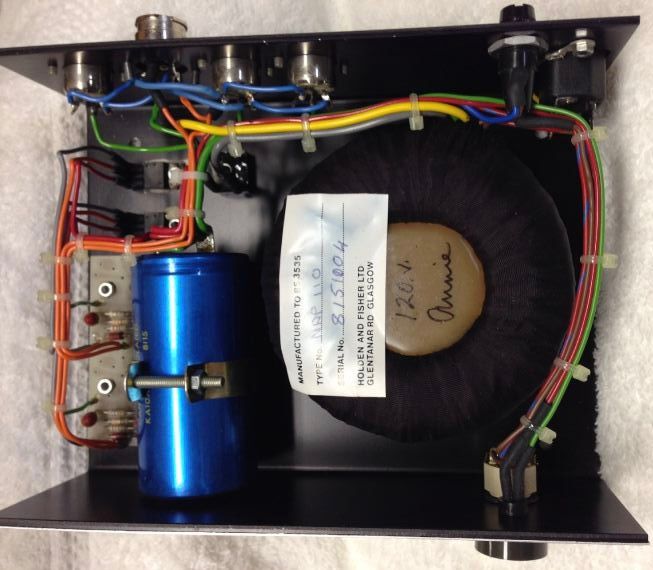
My idea about a “ZapSnaps” became much less theoretical when I had the good fortune to win a local eBay auction that included a Snaps, a Nac 32.5 preamp, and a Nap 110 power amp. (I should note that although my Snaps came to me pretty cheap, they are mystifyingly expensive on eBay, often going for as much as HiCaps, which makes little sense to me.)
All the boxes I bought had been modded with Avondale stuff. My Snaps came to me looking like the below, with two Avondale TPR2 regulators installed. These are an upgrade over the original, single-rail, single-LM317 design of the Snaps, but according to my friends are the TPR2 areparticularly sophisticated and could easily be bettered.
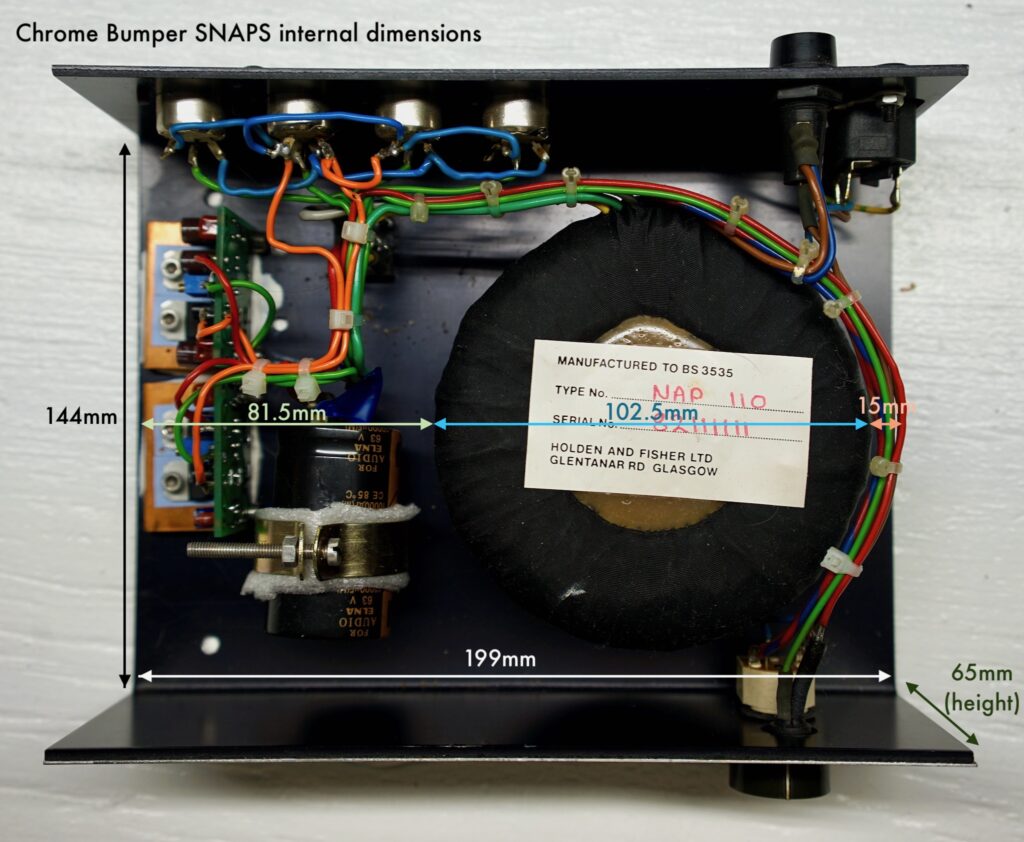
As you can see, I immediately started thinking about whether I could fit a PSM-2 module into the Snaps case. My measurements suggested that, given the PSM-2 module’s 94mm width, I would be able to fit it into the case if I moved the transformer to the edge of the case, which would be possible given the 15mm gap. I went ahead and ordered the PSM-2.
Installing the PSM-2
Installing the PSM-2 turned out to be a bit of an ordeal, but that was mostly down to bad luck. If you’re interested in trying this out, you shouldn’t have nearly as much trouble.
Here’s everything, ready to roll…
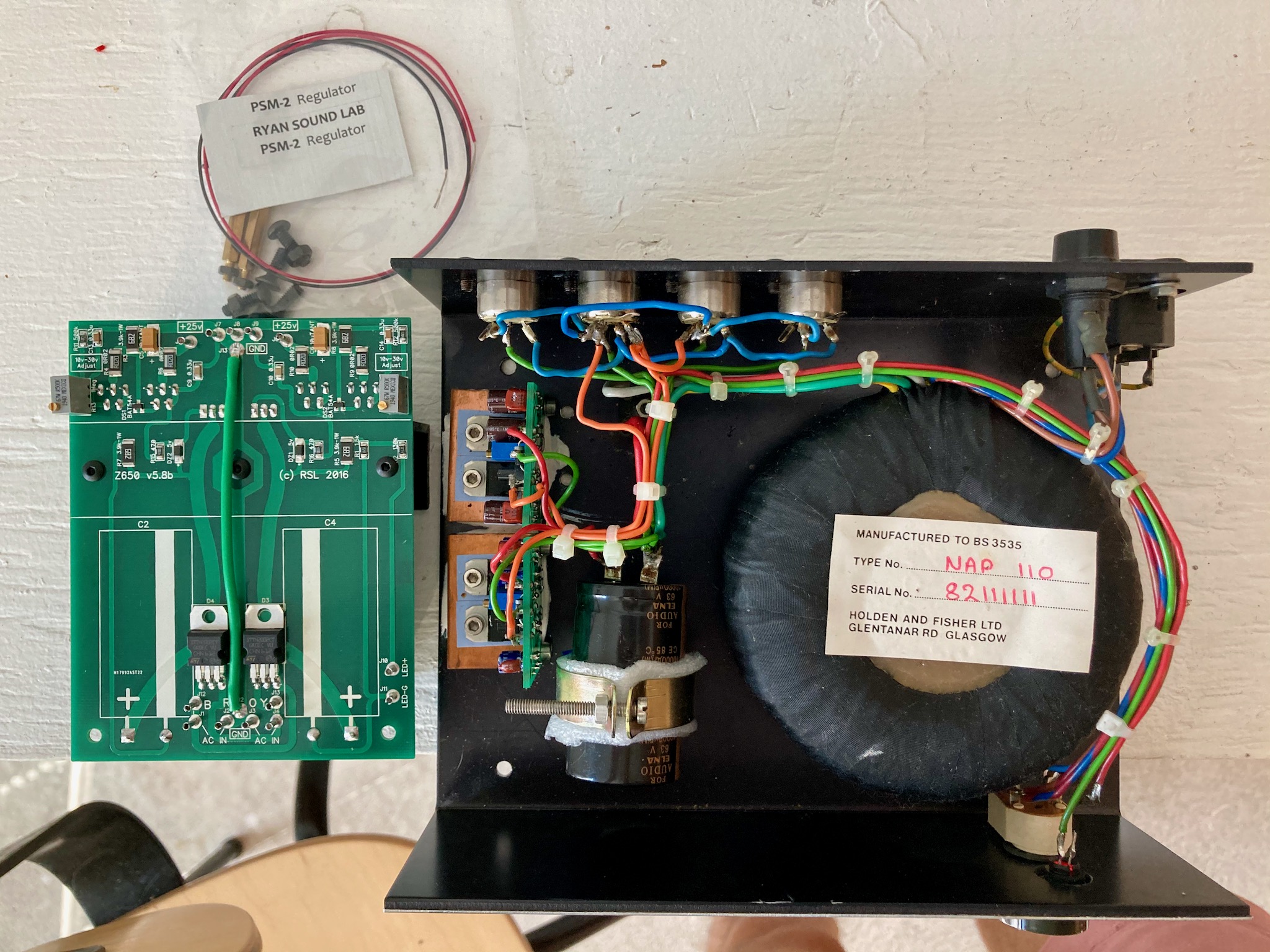
The first step was to get the transformer moved over to the edge of the case. I decided on 13mm as a good distance. This went off without a hitch.
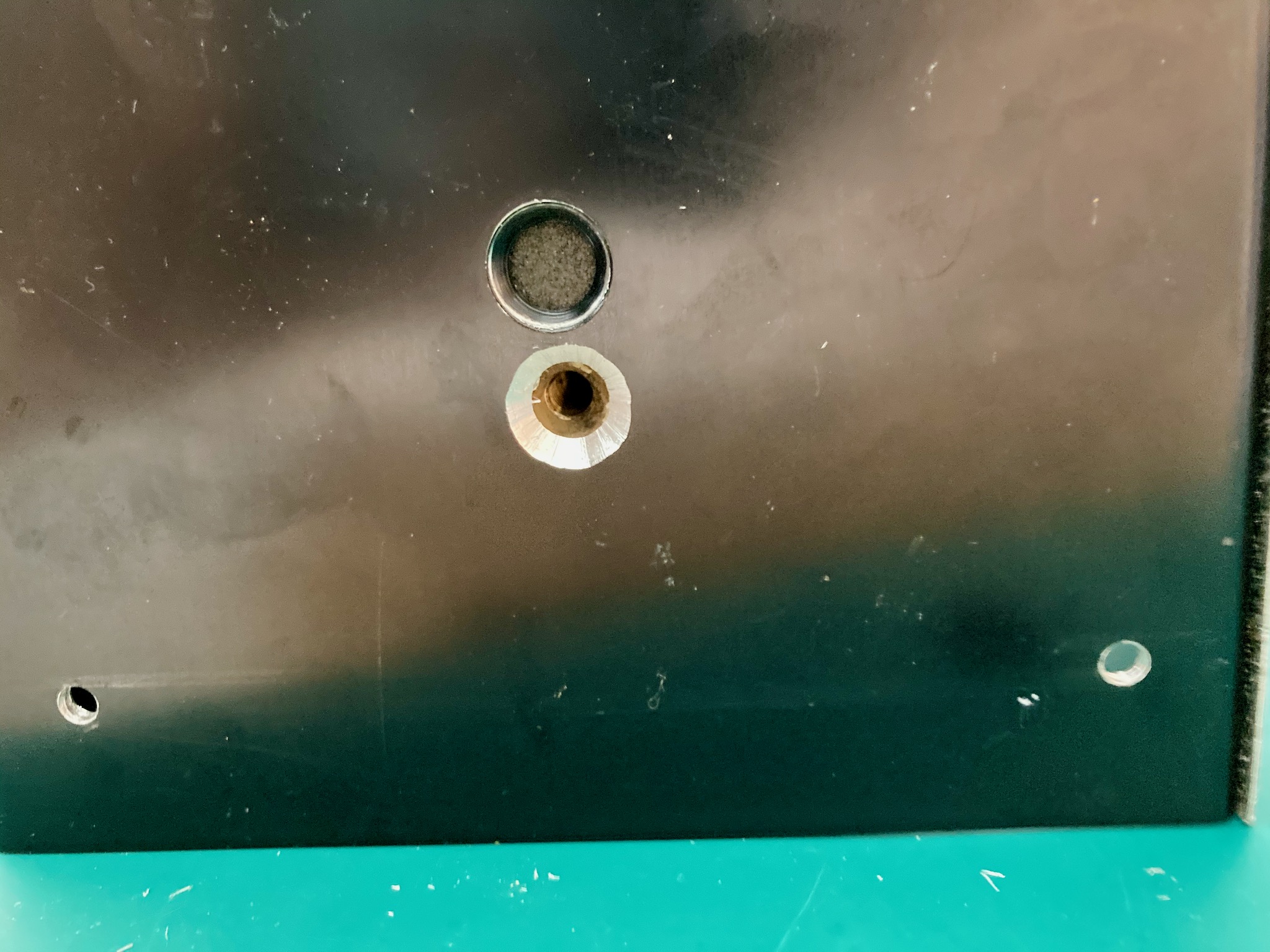
Next, I drilled the four new holes needed to mount the PSM-2 module to the case. Unfortunately, the template Kit supplied was out of date, and put two of the holes in the wrong places, and I ended up with one hole drilled in the incorrect spot before I noticed what was up (Kit has now fixed the mounting template).
One I got the holes figured out, I needed to arrange the wiring. I had three wires coming from my H&F transformer: two +25V AC and a common ground. I attached these to the appropriate spots and I immediately got 25V DC from the two power rails. I then wired up a fresh 5-pin DIN for the 32.5 preamp and another 4-pin DIN for connecting an amp. (In practice, I don’t use this, since I currently prefer going power-only from the ZapSnaps–>32.5 and run audio out directly from the 32.5 to my 135 amps). I only had relatively thin-gauge 24awg Neotech solid core wiring kicking around that day, so that’s what I used — though Nobeone immediate scolded me for it 🙂 Anyway, here’s how it came out looking.
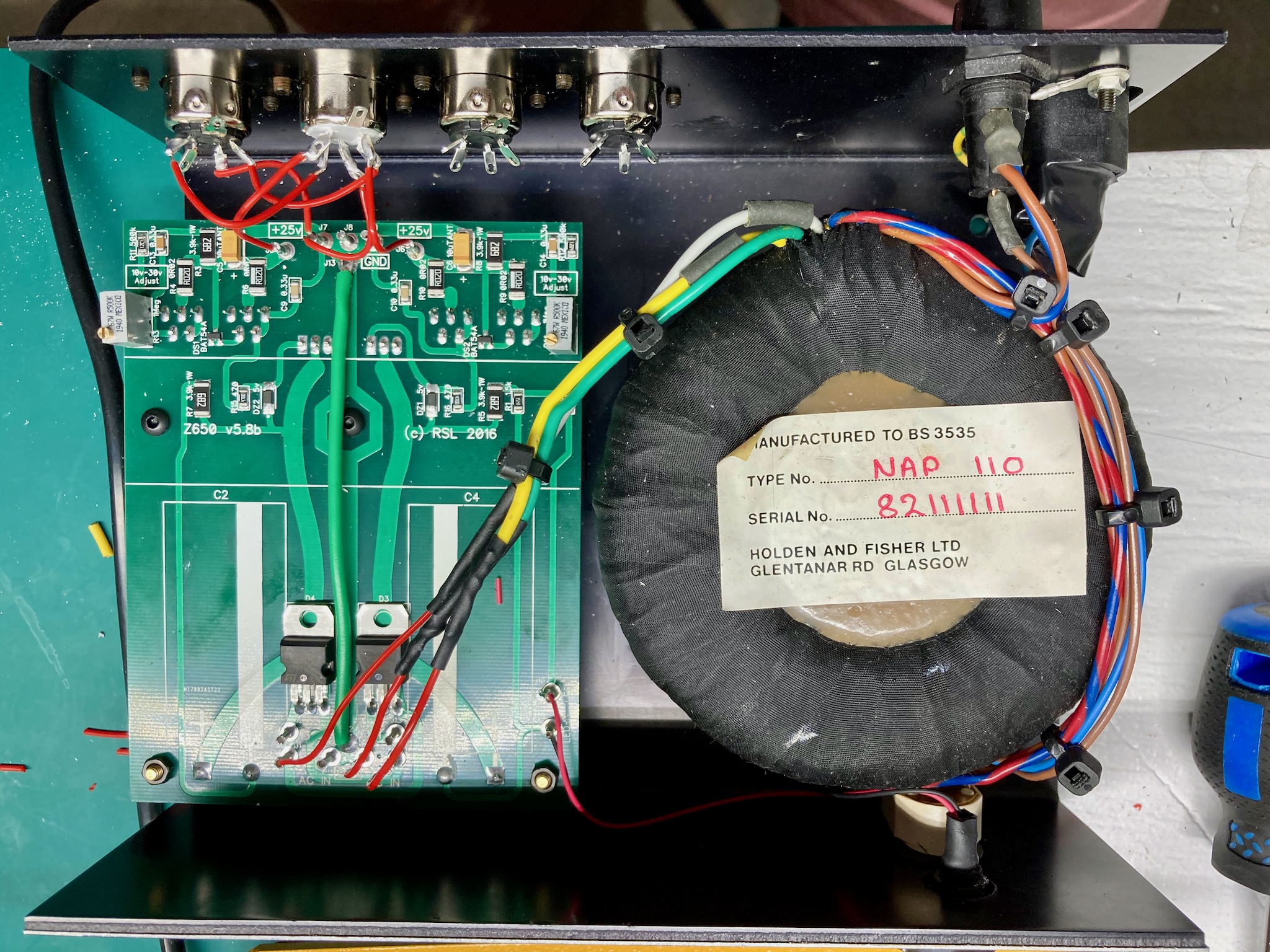
I also installed the supplied blue (more “periwinkle”?) LED, which I personally find a very attractive colour, and also a nice subtle indication that this isn’t a stock Snaps but rather a ZapSnaps! Here’s how it came out looking from the outside, sitting atop my 32.5.
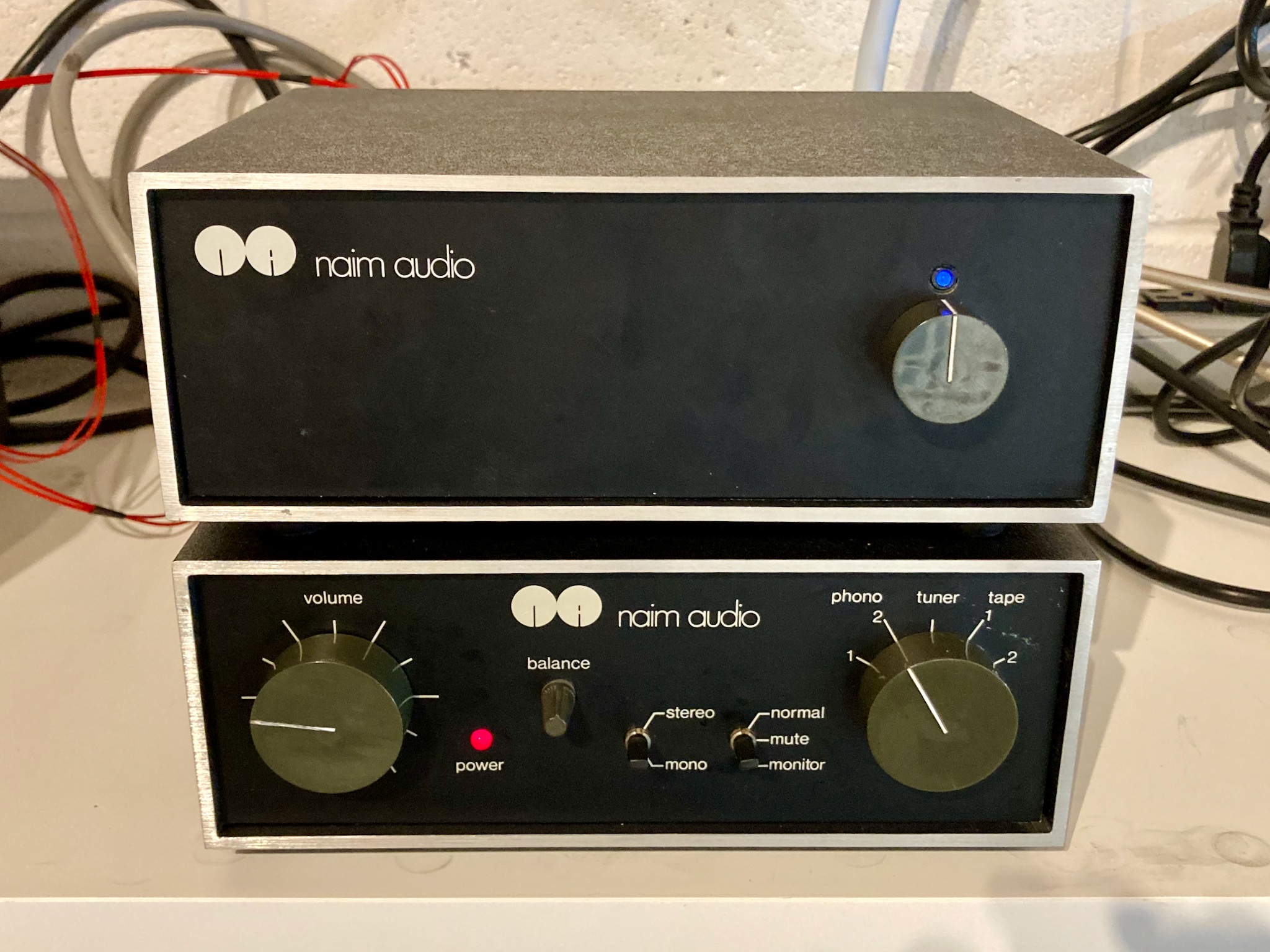
It looked good, it worked initially… but then it stopped working.
I noticed that my 32.5 would randomly cut out — which, on investigation, was because one power rail exiting the ZapSnaps was dropping below 23V, causing the relay in the 32.5 to trip. I contacted Kit, and he said it was possible I had gotten some finger oil or grease on some of the very sensitive high-resistance surface-mount components on the PSM-2. He suggested cleaning these components with alcohol. I did so, and after several attempts, the one drifting power rail settled down.
A Sonic Paradigm Shift
I hadn’t initially noticed a massive difference with the PSM-2 installed. But, after cleaning, then I did! As I wrote on AudioFlat,
Okay, after a very very thorough cleaning of the entire PCB with lots of alcohol with several Q-tips, the board now seems to be holding its 26.0v setting (decided to try a little above 25.0, which Kit says is fine).
And, wow, the difference the PSM-2 has made is massive. I’m sure a large part of it is “unlocking” the Paradise — which hadn’t quite knocked me out the way I had been expecting. Now I’m getting incredible presence, clarity, focus, texture… and amazingly impactful bass, slamming me right in the chest at high volume. But also amazing delicacy and nuance: I’m hearing details I’d never noticed in songs I’ve listened to millions of times on headphones, which is saying something. Again, probably a lot of it is the Paradise, but this is definitely the biggest difference I’ve heard since moving to a loudspeaker setup.
Particularly excellent-sounding records tonight: The Blue Nile’s debut, Bill Callahan’s Dream River (as usual), Destroyer, Kaputt.
I followed up a bit later, having listened some more, during probably the most eye-opening listening session of my life.
Well my previous post has understated what the PSM-2 has done. I have experienced nothing short of a hi-fi paradigm shift!
Getting the PSM-2 working right has brought together all the many, many things I’ve done to every aspect of my system out in the garage, and built on all the work I did on my turntable over the winter (and have continued to do over the summer) — and delivered the most shocking listening session I’ve ever had.
The records I mentioned earlier sounded very, very good. But then I got out my absolute best sounding records, and these were just jaw-droppingly excellent. Listening to my single favourite recording (and up there on my list of favourite records), my King Records pressing of Prince Lasha’s The Cry!, I actually had to open my eyes and stare at the NS-1000M’s left midrange driver to prove to myself that I was not hearing an actual hi hat, so absolutely perfectly metallic was the clang. Similar experience with the bowed bass on the same album, this time coming out of the right speaker, a texture so palpable and variegated I had to look to see it wasn’t there. The bass too was massive, bouncy, deep, bodychecking. I put on some more excellent sounding records to confirm it: Ornette Coleman Golden Circle vol. 1 (original Blue Note); The Shape of Jazz to Come (1960 Atlantic); Rolling Stones “Love in Vain” from Let It Bleed (DSD); Roxy Music, Avalon (first Canadian pressing)… all just shockingly, transformatively excellent. In LP12MF terms, this was a 20% or 25% jump from pre-PSM-2 — just huge, and the single biggest jump I’ve ever experienced.
Again, I’m sure it’s just that the previous Snaps was bottlenecking the whole system, not letting the Paradise or the RSL cards in the 32.5 or the 135s or the NS-1000Ms or the Javelin or the Troika or the Tranquility etc. really do their thing… but the PSM-2 upgrade has opened the gates and released the beasts and given me the absolute hifi thrill of a lifetime. Astounding. Mine is now the best hi-fi setup I’ve ever heard! (Now I’m going to be afraid to change anything lest I ruin this magic!)
Who knew some isopropyl alcohol and a box of Q-tips could be the best upgrade I’ve ever made?!?
So I was pretty happy.
Customer Support + Finishing the Build
But still, although that one power rail had stopped drifting so much, it was still drifting a bit. I would set it to 26.0V, and after a few hours it would be 25.5V, and then a little white later it would be 26.1V. Kit Ryan — who was on vacation through all this, by the way! — offered to send me a replacement unit. This arrived very quickly, but had some other problem — one power rail didn’t work at all. He agreed to send me a third, and that one did the trick. My ZapSnaps now holds its voltage perfectly on both rails. I don’t think it sounds any better than it did when it was drifting a bit — but then, I’m not sure how it could 🙂
Here are some photos of the final build, with beefier cable extending the transformer wires (16awg, leftover from Si’s Paradise cable looms) and connecting the 5-pin DIN to the PSM-2 DC outputs (20awg Neotech solid core PVC).
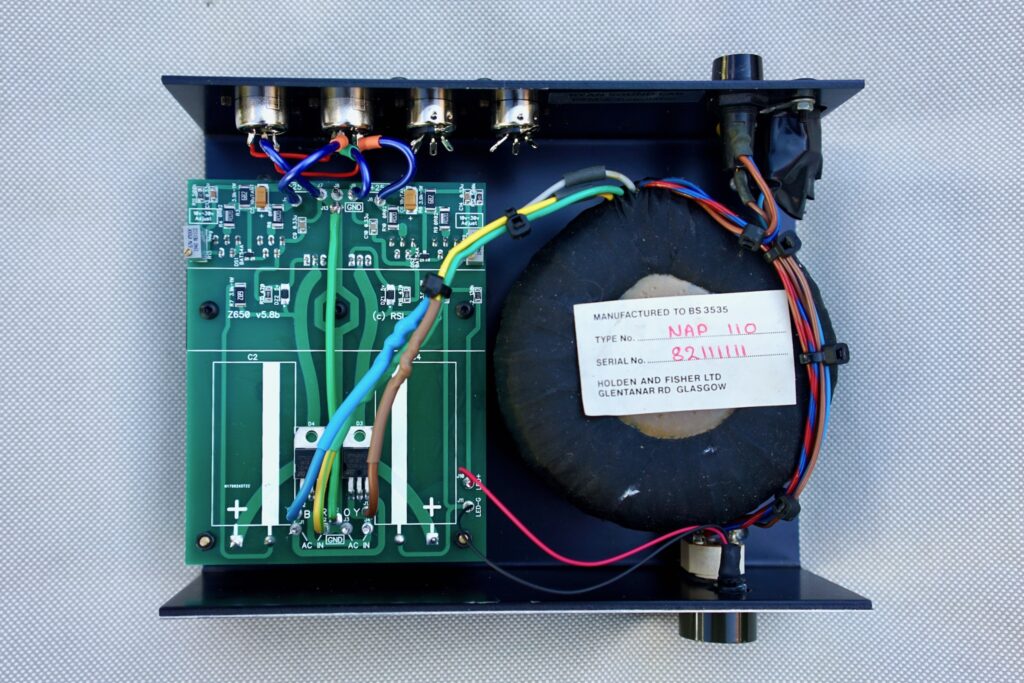
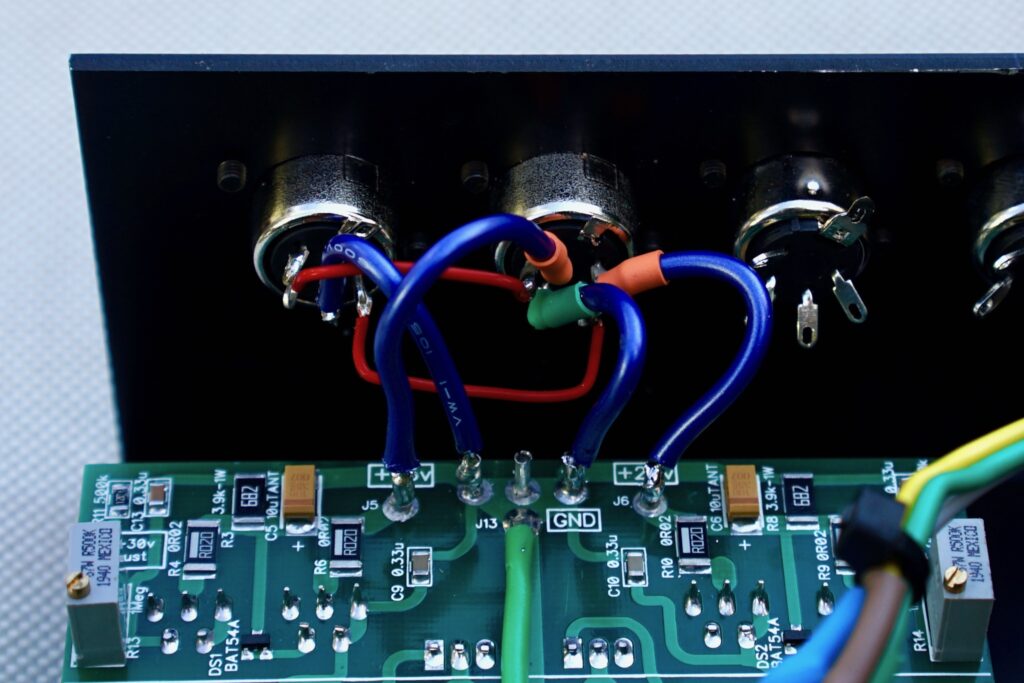
There were a few twists and turns, but this is without question one of the best upgrades I’ve made to my system. It’s made more of a difference than I realized a preamp PSU could make; it was relatively inexpensive; and it’s produced one of the cutest, heaviest-hitting boxes in my system — a winning combination!
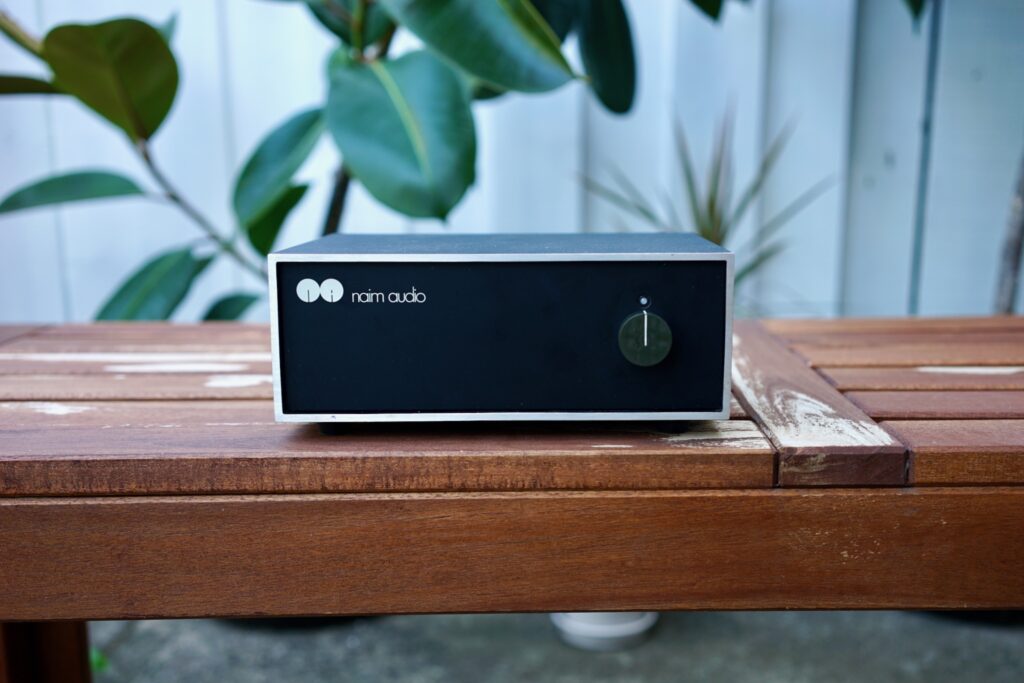
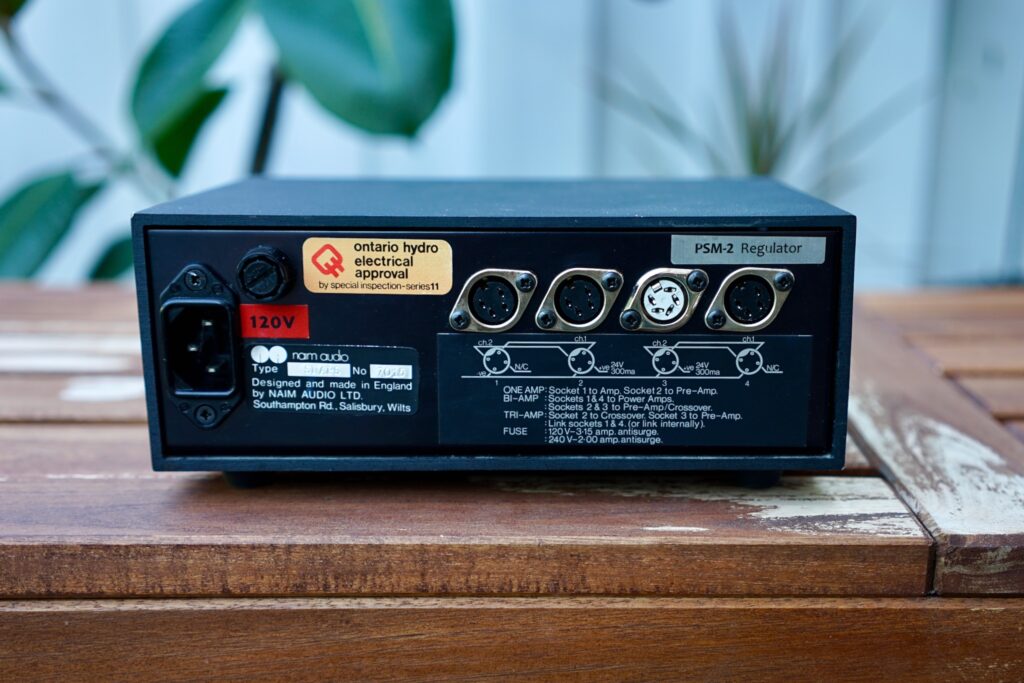

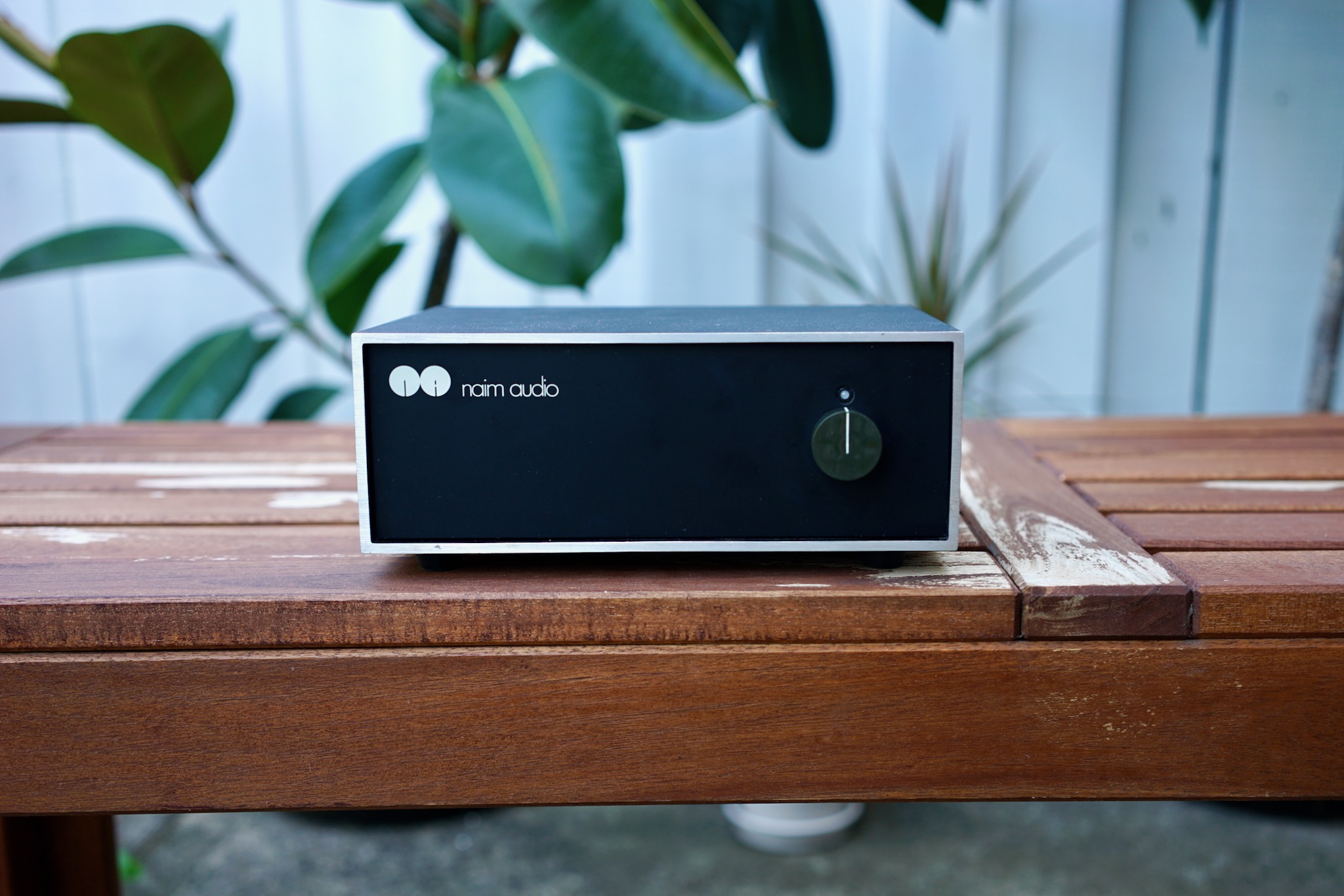
6 Comments
Join the discussion and tell us your opinion.
Now I wish I did not have an Avondale hiCap rebuild and upgrade parts set on my shelf! Great write up and I will be visiting Ryan’s site for a look!
Things change fast, huh 🙂
A-W-E-S-O-M-E ! You’re in Toronto, I’m in Montreal, why don’t we open a custom hi-fi shop in Kingston ? Great work !
Great plan, Gervais!! Also: look forward to some posts on the beautiful Nat01 you passed on to me! It’s up and running and pulling in signals but I definitely need to experiment more with antennas. The NOS display from @hp1 is on its way too and should be here soon…
Where can I get the psm-2 I’m from Northern Ireland
All RSL products are sold direct. Kit definitely ships to the UK. Order from here: https://ryansoundlab.com/index.php?main_page=index&cPath=13